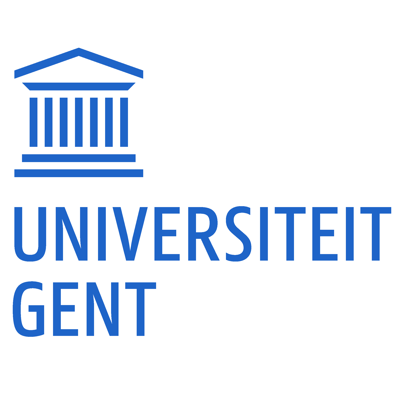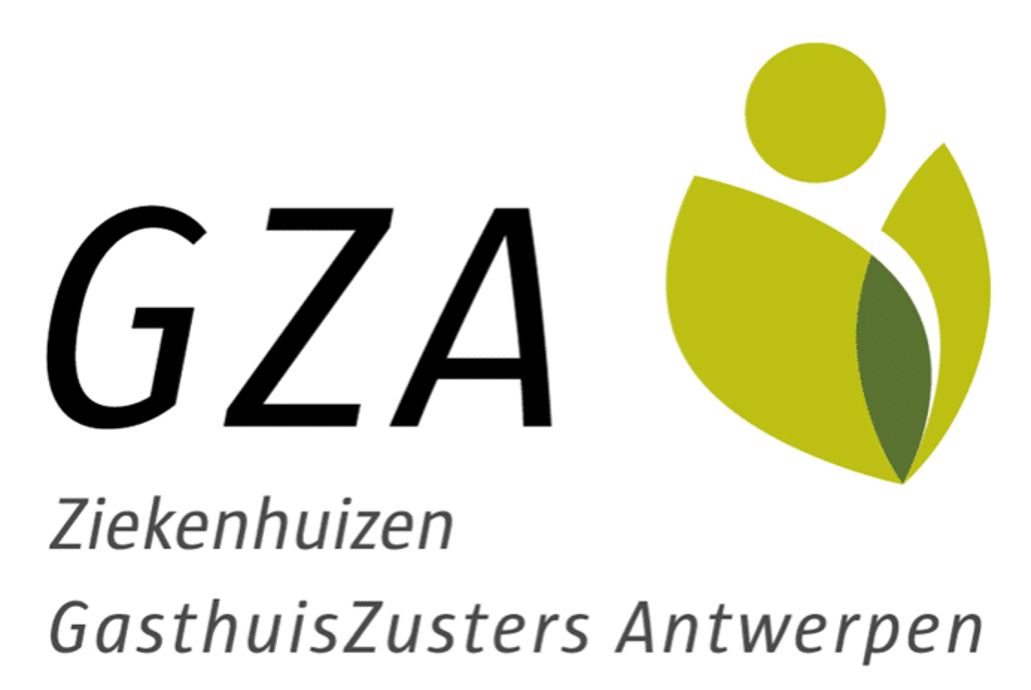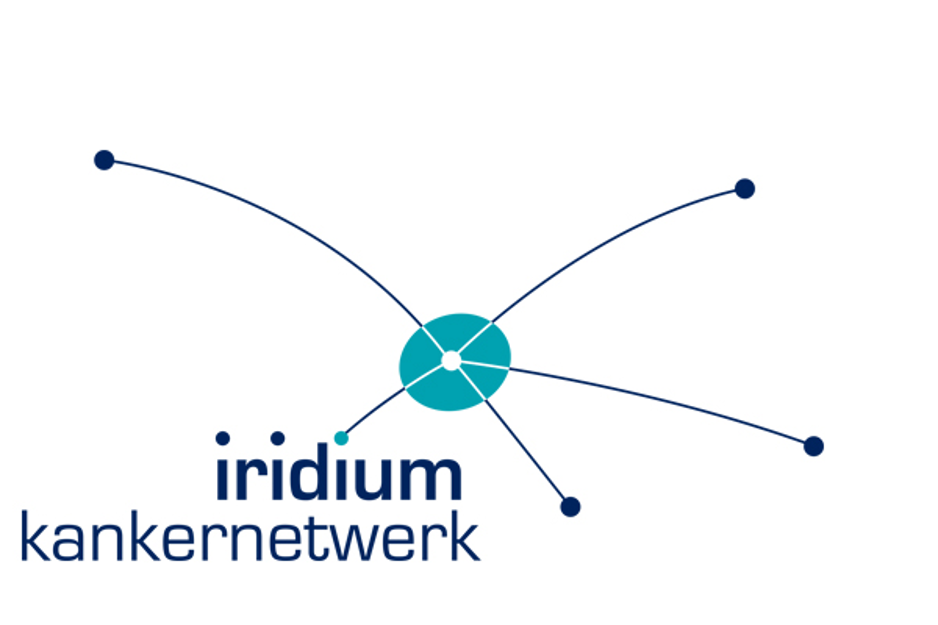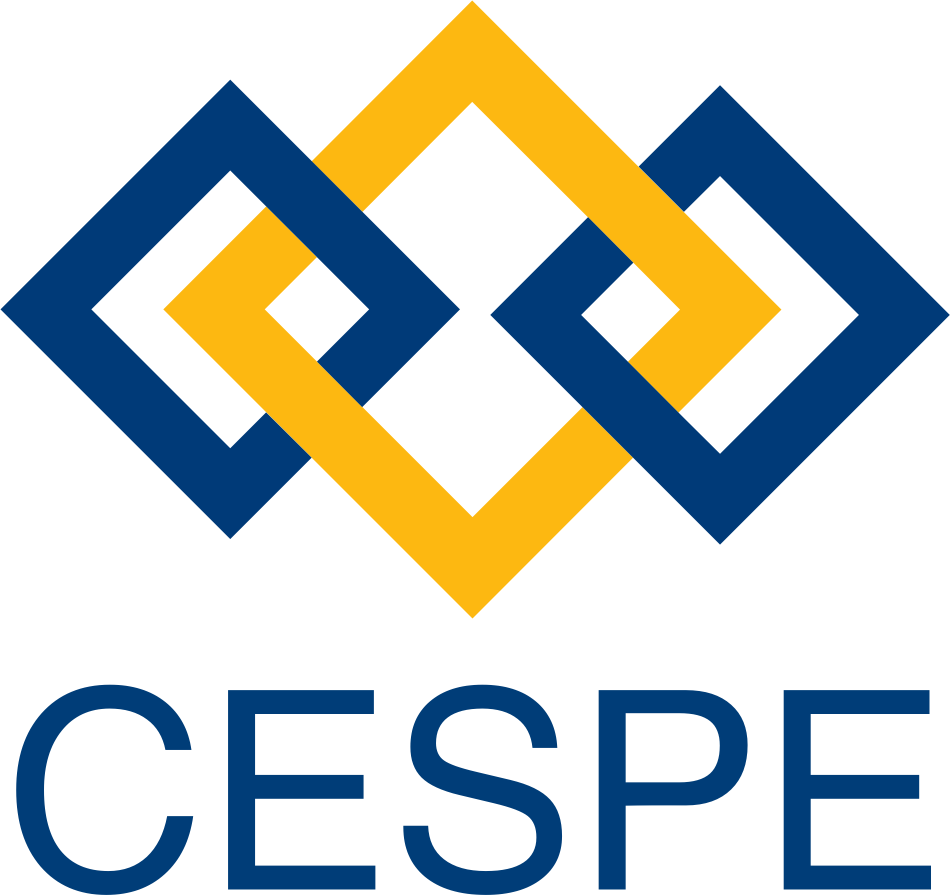
Plenary talks
BMS2021 features interdisciplinary plenary talks:
Title: The Role of Bioengineering Innovation in (Rapid) Pandemic Response
 Geoffrey Chase,
University of Canterbury, Department of Mechanical Engineering, New-Zealand
Geoffrey Chase,
University of Canterbury, Department of Mechanical Engineering, New-Zealand
Biography: Professor Chase received his B.S. from Case Western Reserve University in 1986, with M.S. and PhD from Stanford University (1991, 1996). He spent 6 years working for General Motors and a further 5 years in Silicon Valley, including Xerox PARC, ReSound, Hughes Space and Communications, and Infineon Technologies, before joining the University of Canterbury in 2000, where he is currently its inaugural Distinguished Professor. His research focuses on the intersection of engineering and clinical medicine, primarily in intensive care, metabolic disease in all units, and cardio-pulmonary diseases. These efforts have led to a range of model-based systems to improve care and outcomes, and reduce costs, which are in clinical trials or standard of care use. Dr. Chase has published over 1500 journal and conference papers and 17 US and European patents. He founded 3 startup companies, and is a Fellow of the Royal Society of NZ (FRSNZ), the American Society of Mechanical Engineers (FASME) and IPENZ (FIPENZ).
Abstract: Bioengineers play a crucial role in improving medical care and practice via innovation. Innovation is most frequently driven by need or insufficiency. This plenary talk presents a case study of control engineering in the response to the Covid-19 pandemic. These case studies cover how to use control engineering and dynamics to address Covid pandemic issues. First, where ventilator equipped beds are insufficient to demand, to avoid having to deny care, and, secondly, how to use innovation. The second considers the use of bioengineering to address diagnostic concerns resulting from universal masking mandates, while also creating potential next-generation medical devices. These case studies are used to illuminate key areas where bioengineers can have outsize impact on care and outcomes in emergency situtations.
Title: Epilepsy, Algorithms, and AI: Personalised Seizure Forecasting
 David B. Grayden ,
The University of Melbourne, Department of Biomedical Engineering, Australia
David B. Grayden ,
The University of Melbourne, Department of Biomedical Engineering, Australia
Biography: Professor David B. Grayden is Clifford Chair of Neural Engineering in the Department of Biomedical Engineering, Melbourne School of Engineering and the Graeme Clark Institute for Biomedical Engineering. He obtained his Bachelor of Engineering (Honours) in Electrical & Electronic Engineering in 1990, Bachelor of Science in Computer Science in 1991, and his PhD in Electrical & Electronic Engineering in 1999 from the University of Melbourne, Australia. He was a Research Fellow in the Bionic Ear Institute 1997-2006 and then returned as an academic to the Faculty of Engineering and Information Technology, University of Melbourne in 2006. Prof Grayden's main research interests are in understanding how the brain processes information, how best to present information to the brain using medical bionics, such as the bionic ear and bionic eye, and how to record information from the brain, such as for brain-machine interfaces. He is also conducting research in epileptic seizure prediction and electrical stimulation to prevent or stop epileptic seizures, and in electrical stimulation of the vagus nerve to control inflammatory bowel disease. He has published 135 refereed journal papers and book chapters and 78 full, refereed conference papers. Together with the Melbourne Business School, he teaches BioDesign Innovation, an immersive course in how to innovate in Medical Technologies for Master of Engineering and Master of Business Administration students.
Abstract: Epilepsy is a common and serious neurological disorder, characterised by recurrent seizures, affecting over 60 million people worldwide. Between 30-40% of sufferers' seizures are not adequately controlled with current therapies. The inherent unpredictability of seizures is a significant factor contributing to the risk of injury, psychosocial disability, and mortality. In these cases, the quality of life impairment compares unfavourably with other chronic illnesses such as hypertension, diabetes or heart disease, and the uncertainty of seizure occurrence is a major component of this impairment. New methods for epilepsy treatments, therapy titration and seizure forecasting are desperately needed. Artificial intelligence technologies offer opportunities to automatically detect and even forecast epileptic seizures, which may allow new management strategies and pre-emptive therapies for seizure control that will increase patient safety and quality of life.
Title: AI to Augment Human Intelligence to Improve Health Outcome; Challenges and Opportunities
 Rahil Garnavi ,
IBM Services Centre for Applied Research, Australia
Rahil Garnavi ,
IBM Services Centre for Applied Research, Australia
Biography: Dr. Rahil Garnavi is a Senior Technical Staff Member and a Master Inventor at IBM. Rahil is currently leading Data and AI initiative of IBM Services Centre for Applied Research in Australia, focusing on translation of cutting-edge AI technologies into real-world use cases to accelerate IBM clients digital strategies. Rahil was selected as finalist for the Women in AI Awards Australia New and Zealand 2021. Over the last decade, she has led research at the intersection of AI and healthcare, across domains of radiology, ophthalmology and dermatology developing clinical decision support systems to assist clinicians, with more than 60 peer-reviewed publications and 60 patents. Rahil received her B.Sc. in software engineering from Amirkabir University of Technology, her M.Sc. in artificial intelligence from the University of Isfahan, and her Ph.D. from the University of Melbourne in 2011.
Abstract: The emotional and financial costs associated with managing late-onset diseases are substantial. Although many of these conditions are age-related, they are not limited to elderlies, causing individuals and the healthcare system to shoulder a massive burden of productivity loss. Therefore, early intervention through screening is critical. We are, however, facing with shortage of experts, which is predicted to worsen over the coming years. For all these reasons; achieving early intervention, avoiding loss of productivity (in case of vision loss due to eye diseases, for instance) and saving lives (in case of cancer), and augmenting the available experts to improve patient care, AI is the preferred technology. In doing so, medical images contain a wealth of information that AI can help unlock. In this talk, some success stories of applying AI to medical images for improved health outcome is shared. Moreover, some of the challenges in effective development and adoption of AI, as well as, opportunities ahead will be discussed.
Title: Personalized Cancer Therapy by Model-based Optimal Robust Control Algorithm
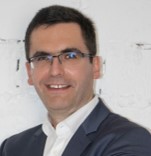 Levente Kovacs,
Obuda University, Department of Physiological Controls Research Center, Hungary
Levente Kovacs,
Obuda University, Department of Physiological Controls Research Center, Hungary
Biography: Professor Levente Kovacs is the rector of Obuda University, Hungary. He is the holder of the prestigious ERC Starting Grant on Tamed Cancer research. His research interests are also in the area of physiological control systems, including the creation of artificial organs and control systems for them. He is also a professor of the Physiological Controls Research Center (PhysCon) with focus on the interdisciplinary field of biomedical engineering mostly on the physiological modeling, simulation and control domain, efficiently supporting the progress of medical science (both in terms of research and clinical practice) with actual knowledge of engineering sciences. The most important research domains of his team are connected to diabetes (artificial pancreas), hemodialysis, biostatistics (evidence-based medicine), cancer, where in case of the last one it is recipient of the EU's ERC StG grant.
Abstract: In conventional cancer therapies the doses are chosen to be as high as possible to maximize the effect of the drug and minimize the chance of the development of drug resistance. Although, this approach increases side effects and costs. Personalizing treatments could result in a therapy with smaller doses but the same effect, resulting in smaller costs for the drug and fewer side effects. We have developed tumor models based on ordinary differential equations for several mice models, for angiogenic inhibitor and also for cytotoxic drugs. Also, we have developed control algorithms focusing on problems specific to physiological control, such as inter- and intrapatient variability, positivity, and impulsive nature of the control input. In silico tests proved that our algorithms are suitable for optimizing therapies demonstrated on animal experiments as well.
Title: Agent-based models and their estimation
 Andrea De Gaetano,
National Research Council of Italy, Biomathematics Laboratory, Italy
Andrea De Gaetano,
National Research Council of Italy, Biomathematics Laboratory, Italy
Biography: Andrea De Gaetano, a Director of Research with CNR IASI and current Director of CNR IRIB, is a surgeon, mathematician and lawyer with a long experience of coordinating biomedical research groups, obtaining funded projects and producing publications. His characteristic strength is rapidly understanding diverse medicai research problems; facilitating communication and organizing investigation groups including medicai doctors, mathematicians/statisticians and software engineers; designing and delivering mathematical, statistical and computational solutions. Current topics of research are: more advanced models for glucose metabolism and long-term diabetes development, efficient algorithms for (population) parameter estimation, the application of modeling for preparedness against health crises (in particular regarding the physiological assessment of a large number of trauma victims), the geostatistical evaluation of pollution and respiratory epidemiological data in Palermo, the development of diagnostic procedures for Cerebral Auto-Regulation dysfunction, the extension of estimation techniques to Individual Based Models and the modeling of violence outbreaks as a support to security decision-makers.
Abstract: A fundamental theme of the application of modeling to biology is the estimation of model parameters starting from the observed data. The estimation process is relatively simple if the model is deterministic, where a given value of the parameters always corresponds to an identical behavior of the model, possibly burdened by measurement error. However, many dynamical systems in biomedicine are inherently stochastic: not only does a measurement error occur in observing them, but the phenomenon itself is variable because it is subject to unpredictable perturbations. If what we can observe reflects, perhaps only partially, an underlying Markov process (whose future is completely determined by the present state), then there are consolidated statistical methods for estimating the parameters of a model that describes the phenomenon. However, it happens that some stochastic models (notably Agent-Based Models, ABMs) are essentially non-Markovian or non-local: the future is determined by the entire history of the model and not by its present state only. The three paradigmatic approaches for estimating the parameters of non-local models suffer from significant drawbacks: "minimization" methods offer only point and heuristic estimates, "regressive" methods violate theoretical assumptions and strongly depend on the choice of sample summary statistics, "rejection" methods are prohibitively heavy. In this presentation two ABMs currently under investigation are introduced, and available approaches to parameter estimation are described and discussed.
Title: Closed-loop control of anesthesia: a help for the anesthesiologists
Biographies:
 Nicola Latronico,
University of Brescia, Department of Medical and Surgical Specialties, Radiological Sciences and Public Health, Italy
Nicola Latronico,
University of Brescia, Department of Medical and Surgical Specialties, Radiological Sciences and Public Health, Italy
Nicola Latronico is full professor of anesthesia and critical care medicine at the Department of Medical and Surgical Specialties, Radiological Sciences and Public Health of the University of Brescia. He is also clinical director of the University Division of Anesthesia and Critical Care Medicine of the Brescia Hospital of Brescia. He has been director of the School of Specialty in Anesthesia, Critical Care and Pain Medicine from 2012 to 2018, vice-president of the Italian National Society of Anesthesia, Critical Care and Pain from 2015 to 2018 and president of the Brescia Ethics Committee from 2017 to 2020. His main research interests are in ICU-acquired neurological disorders, long-term consequences of critical illness, neurocritical care, neurotrauma, sepsis and multiple organ dysfunction syndrome, evidence based medicine, ethics.
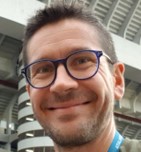 Massimiliano Paltenghi ,
Brescia Hospital, Department of Anesthesiology, Italy
Massimiliano Paltenghi ,
Brescia Hospital, Department of Anesthesiology, Italy
Massimiliano Paltenghi is an anesthesiologist at the Brescia Hospital with fifteen years of practice experience, using of the latest industry equipment and technology. He has been the supervisor of medical students, fellows, and residents. He has also been the author or co-author of several medical articles on current anaesthesia techniques that has been published in professional journals. From 2019 he is also operating room manager, so that he is in charge of the supervision of the planning, implementation and evaluation of patient care programs for the perioperative patient population, working with associated services and clinics as appropriate. He is the principal medical investigator of the ACTIVA project.
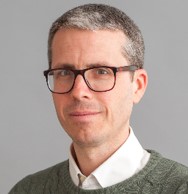 Antonio Visioli ,
University of Brescia, Department of Mechanical and Industrial Engineering, Italy
Antonio Visioli ,
University of Brescia, Department of Mechanical and Industrial Engineering, Italy
Antonio Visioli is a full professor of control systems at the Department of Mechanical and Industrial Engineering, University of Brescia, Italy, where he leads the industrial control systems research group. His research interests include anesthesia control, industrial controllers, mechatronics, dynamic inversion based control, fractional control. He has edited one book and authored or co-authored three monographs, one textbook and more than 300 papers in international journals and conference proceedings. He is the vice-chair of the IFAC Technical Committee on Education and a member of the IFAC Technical Committee on Biological and Medical Systems. In 2014 he started the ACTIVA project in cooperation with anesthesiologists of the University of Brescia and of the Brescia Hospital, in order to develop a control system for general anesthesia in operating rooms.
Abstract: Engineering tools can be helpful for clinical anesthesiologists to maintain optimal safety and efficiency, in particular when the available resources are scarce compared to number of patients, as for example during the COVID-19 pandemic.
Among these tools, closed-loop control of general anesthesia has attracted a lot of research interest in the last decades. In this talk we will present the methods and the results of the ACTIVA (Automatic Control of
Total IntraVenous Anesthesia) project, which has been developed as a cooperation between the University of Brescia and the Brescia Hospital in Italy. The aim is to control the depth of hypnosis, measured through the BIS signal, obtained by co-administering propofol with a portent narcotic agent, the remifentanil. Practical issues in the design as well as in the implementation of the controller will be discussed, showing that the system may have practical application in daily practice contributing to high patients safety during surgical anesthesia.
Title: Hidden clinical pitfalls in the development of closed-loop anesthesia systems
 Martine Neckebroek ,
Ghent University Hospital, Department of Anesthesiology, Belgium
Martine Neckebroek ,
Ghent University Hospital, Department of Anesthesiology, Belgium
Biography: Dr MD Martine Neckebroek postgraduated in algology and was anesthesiologist in Hospital Aalst-Asse-Ninove area for 8 years, with applications in anesthesiology, emergency medicine and intensive care. She followed a 16 years specialisation traject in the field of Anesthesiology. Since 2006 she is anesthesiologist at Ghent University Hospital, with expertise in pediatric anesthesia, difficult airway risk patients and intensive care. She is the vice-director of the Department of Anesthesiology at Ghent University Hospital. Her research interest is on automated anesthesia with computer based optimization algorithms and she is principal investigator in clinical trials for analgesia modelling and closed-loop control of anesthesia. In 2021 she obtained her PhD in Medical Health Sciences from Ghent University, Belgium.
Abstract: Closed-loop anesthesia seems to be the solution to achieving perfectly controlled anesthesia. Clinical practice awakens us to the realistic scenario of this dreamscape. After all, the closed-loop system is only as strong as its weakest link. The patient can be the weak link: no two patients are the same. For example, heart function, liver function, fat distribution, metabolism interfere in a very identical way. Surgical interaction also plays into the operation of a closed-loop. On the one hand, here is the severity of the surgical stimulus, but also it can cause bleeding and a disruption of hemodynamics. A little mentioned but very important aspect in the success of a closed-loop system is the chance of movement of the patient if it is not allowed for curarisation. This last aspect is also one of the hidden pitfalls in closed-loop anesthesia. After all, an EEG monitor, which records the effect of our variable, gives no indication of the likelihood of movement. Therefore, before promoting large-scale application of closed-loop systems, it is necessary to identify all these aspects, depending on the needs of a particular type of surgery.
Title: The Future of Closed-loop Control of Anesthesia and Hemodynamics
 Dana Copot ,
Ghent University, Research Group on Dynamical Systems and Control, Belgium
Dana Copot ,
Ghent University, Research Group on Dynamical Systems and Control, Belgium
Biography: Dana Copot received the M.Sc. degree in chemical engineering from Gheorghe Asachi Politechnica University, Iasi, Romania, in 2012, and the Ph.D. degree from Ghent University, in 2018, on modeling diffusion mechanisms in biological tissues. Her main research interest includes predictive control of drug delivery systems. In 2017 she won the best paper award at the IEEE International Conference on Intelligent Engineering Systems. She is currently a recipient of the Prestigious Flanders Research Foundation Grant for Postdoctoral Fellows at Ghent University. The authored book on Automated Drug Delivery in Anesthesia, Elsevier 2020 has been nominated for the BMA Medical Book Awards Competition. Since 2018 she focused more on the application of control strategies to both biomedical and industrial processes. Her research interests are modelling, identification and control of dynamical system with focus on manufacturing industry.
Abstract: A major challenge in anesthesia is to adapt the drug infusion rates from observed patient response to surgical stimuli. The patient models are based on nominal population characteristic response and lack specific surgical effects. In major surgery (e.g. cardiac, transplant, obese patients) modelling uncertainty stems from significant blood losses, anomalous drug diffusion, drug effect synergy/antagonism, anesthetic-hemodynamic interactions, etc. This complex optimisation problem requires superhuman abilities of the anesthesiologist. Computer controlled anesthesia holds the answer to be the game changer for best surgery outcomes. Closed loop control plays a crucial role in both the natural and engineering world. In anesthesia, closed-loop control promises to limit the impact of individual patient variability on performance, optimize anesthesiologist workload, increase time spent in a more desirable clinical state, and ultimately improve the safety and quality of anesthesia care. Regulation of hemodynamic parameters is also a challenging problem due to inter- and intra-patient variability, drug interactions, patient condition and in the case of simultaneous control of MAP and CO strong coupling between the two variables. This plenary talk will focus on the developed benchmark simulator for MIMO closed loop control of anesthesia and hemodynamic system.
Title: Towards Industry 4.0 and Continuous Pharmaceutical Manufacturing
 Ioana Nascu ,
University of Surrey, Department of Chemical and Process Engineering, England
Ioana Nascu ,
University of Surrey, Department of Chemical and Process Engineering, England
Biography: Ioana Nascu has done her undergraduate and master studies in control engineering at the Technical University of Cluj Napoca, Romania, where she graduated in 2011. For her PhD she joined the group at the Centre for Process Systems Engineering (PSE), Imperial College London, where she focused on multiparametric model predictive control and advanced estimation techniques with applications to biomedical systems. After her PhD, in 2016 she moved to Texas A&M Energy Institute and Artie McFerrin Department of Chemical Engineering as a Postdoctoral Research Associate. She has spent the last two years of this postdoc in a joint research between Texas A&M and Eli Lilly and Company, where she had the opportunity to work on site at Eli Lilly on the control of pharmaceutical processes. Moreover, during this time she was able to implement and test the designed strategies on the experimental setup. She is currently a Lecturer at the Technical University of Cluj Napoca, Romania as well as an Associate Lecturer at University of Surrey, Department of Chemical and Process Engineering, UK and a Postdoctoral Research Associate at Key Laboratory of Advanced Control and Optimization for Chemical Processes at East China University of Science and Technology, China. Her recent work has been focused on advanced process control in tissue engineering as well as pharmaceutical processes.
Abstract: Due to the complex nature of pharmaceutical materials, there has always been a gap between fundamental science and applied engineering. Pharmaceutical plants are required to operate near operational constraints with very strict product quality specifications and deal with complex and highly integrated processes, varying production targets and incoming material variability. Consequently, the perception of the role of control systems has changed to an integrated element of business planning in order to simultaneously ensure feasibility and optimality of process operation. Moreover, the pandemic crisis during the past year posed unprecedented challenges to the continuity of drug production and highlighted that pharmaceutical manufacturing capacity needs to be flexible and adaptive to ensure that it remains proportional to actual needs. Driven by demands for reliability, enhanced sustainability, cost-effectiveness as well as due to recent advances in manufacturing technology the pharmaceutical manufacturing industries have undergone a paradigm shift from conventional batch pharmaceutical manufacturing to continuous manufacturing, a faster, more efficient process. Nevertheless, there is still a great need to adopt manufacturing innovations that can rise quality standards while lowering time, effort and cost of the manufacturing. Industry 4.0 (Smart Manufacturing) emerged as a manifestation of cultural and mindset change across multiple industries leading to highly automated and data-rich systems for manufacturing by integrating digital tools in process design and operations. Applied to the pharmaceutical systems, this will facilitate the implementation of continuous manufacturing as well as real-time release testing by being able to track product quality in real-time. This will lead to the release of life critical medication with reduced off-line quality testing compared to existing practices.
Title: Pharmaceutical Manufacturing of the Future
 Thomas De Beer ,
Ghent University, Department of Pharmaceutical Process Analytical Technology, Belgium
Thomas De Beer ,
Ghent University, Department of Pharmaceutical Process Analytical Technology, Belgium
Biography: Thomas De Beer graduated in pharmaceutical sciences in 2002 at the Ghent University in Belgium. He obtained his PhD at the same university in 2007. For his PhD research, he examined the suitability of Raman spectroscopy as a Process Analytical Technology tool for pharmaceutical production processes. Within his PhD research period, he worked four months at University of Copenhagen in Denmark, Department of Pharmaceutics and Analytical Chemistry (Prof. Jukka Rantanen). After his PhD, he was an FWO funded post-doctoral fellow at the Ghent University (2007-2010). Within his post-doc mandate, he worked 9 months at the Department of Pharmacy, Pharmaceutical Technology and Biopharmaceutics from the Ludwig-Maximilians-University in Munich, Germany (Prof. Winter and Prof. Frieb). In February 2010, he became professor in Process Analytics & Technology at the Faculty of Pharmaceutical Sciences from the university of Ghent. His research goals include bringing innovation pharmaceutical production processes (freeze-drying, hot-melt extrusion, continuous from-powder-to-tablet processing etc.). More specifically, Prof. De Beer contributes to the development of continuous manufacturing processes for drug products such as solids, semi-solids, liquids and biologicals (continuous freeze-drying of unit doses). Thomas De Beer is also director of Ghent University's Center of Excellence in Sustainable Pharmaceutical Engineering (CESPE) which is founded in 2016. In 2018, Thomas De Beer became co-founder and CEO of the Ghent University spin-off company RheaVita which provides a continuous freeze-drying technology for the pharmaceutical market.
Abstract: Today, the pharmaceutical sector is facing new major challenges. The number of new molecules reaching the market has been decreasing during the past decades. Another characteristic feature of the market is that instead of traditional small molecules, therapeutic proteins/peptides represent a significant and increasing portion (currently > 30%) of newly approved pharmaceutical products. Innovative and flexible manufacturing processes for novel drug delivery systems enabling targeted delivery of the active molecule need to be developed. There is an obvious pressure to streamline not only the drug discovery programs producing new blockbuster molecules, but also to engineer highly functional drug products from these molecules in a fast and cost-effective way (whereas today the first screening steps until commissioning can take up to 14 of the 20 year of drug patent). This highlights the need for future manufacturing solutions for the 21st century drug products. Population ageing, but also earlier detection and improved treatments of cancer creates not only a need for new types of drugs and more medication per capita, but also a need for more personalized, targeted and tailor-made drug products. At the same time, specifically the pharmaceutical manufacturing industry faces challenges: increasing financial pressure, more outsourcing of activities into low-cost countries, and the shift of R&D activities to Asian countries. Running flexible, efficient and sustainable manufacturing processes was not essential within the pharmaceutical industry as long as the market was not requiring tailor-made medication. However, the blockbuster model has run its course, and high value-low volume products are becoming more important. Controlled, safer, more cost-effective, well-designed and science-based engineered, flexible and preferably continuous and controlled (instead of traditional batch wise) manufacturing processes are to be developed to enable highly customized and personalized drug delivery systems, faster time-to-market, successive generation of new innovative drug products and smaller and greener production facilities with minimal need for scaling-up and maintenance. This presentation will focus on the drivers, needs and current trends and advancements in pharmaceutical manufacturing innovation.
